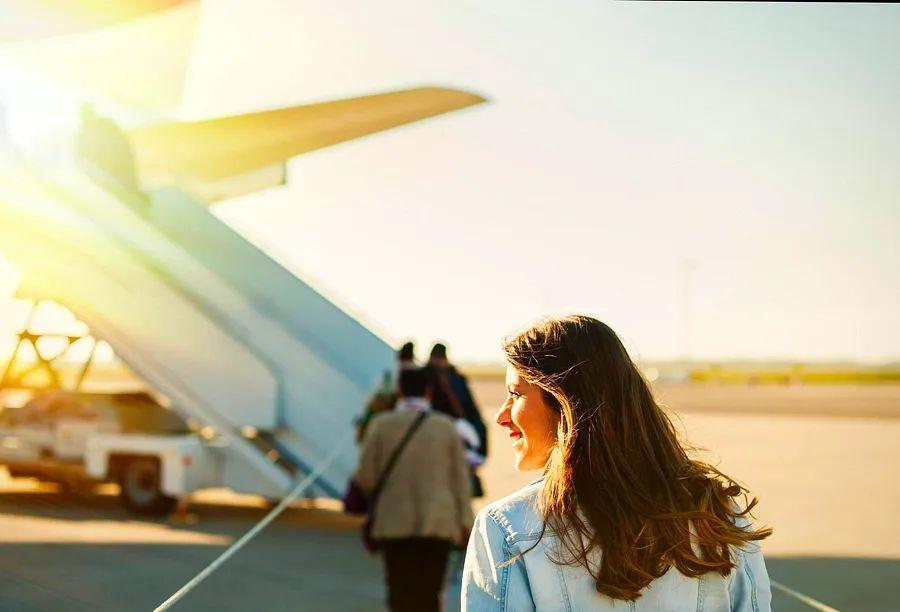Essential Tips for Navigating Any Airport

Airports can often feel crowded, perplexing, and daunting. However, they can also be straightforward to navigate and even enjoyable. This guide offers a wealth of tips and strategies to help you move through the airport effortlessly.



Arriving at the Airport
You’ve secured your flight and packed your bags. The Dinogo Flight Tracker indicates your flight is on schedule. Now it’s time to head to the airport.
Whether you opt for a bus, taxi, train, rideshare, or are fortunate enough to get a lift from a friend or family, the goal is to arrive at the airport in time to catch your flight with minimal hassle and stress.

Arrive too late, and you risk missing your flight. Arrive too early, and the airline’s check-in or baggage drop might not be available yet. So, when is the right time to arrive at the airport? Typically, it’s advised to get there at least two hours before a domestic flight and three hours ahead of an international flight.
Consider arriving even earlier if you’re checking bags, need to present documents before obtaining your boarding pass, or during peak travel times like holidays, summer, or busy periods such as Monday mornings and Friday afternoons.
Check-in and baggage drop-off.

Most airlines encourage you to check in for your flight at least 24 hours before departure. It’s advisable to do this as soon as you can.
Doing so allows you to upload necessary documents, identify any reservation issues, get on the upgrade list (if eligible), confirm or change your seat assignments, assess baggage fees, and download your boarding pass to print or save on your phone.
If you intend to use a digital boarding pass, it's wise to also print a hard copy. If your phone runs out of battery overnight or if security lines are lengthy, you might not access your boarding pass. A paper backup offers affordable peace of mind.
If you aren’t checking any bags and don’t need to stop by your airline’s check-in desk, you can head straight to security with your personal items and carry-on luggage.
Each airline has slightly different carry-on bag regulations regarding size, weight, and destination (domestic or international), so take a moment to ensure your bags comply with your flight’s requirements.
This might involve grabbing a tape measure and weighing your bags, but it can save you hassle on crowded flights when attendants are looking to check oversized luggage at the gate.

While airline regulations for carry-on bags may vary, the Transportation Security Administration maintains a consistent list of prohibited items for carry-on luggage.
When unsure, consult the Transportation Security Administration’s comprehensive 'What Can I Bring?' tool or reach out to TSA on social media for clarification on an item you wish to include in your carry-on. For instance, baseball bats are not allowed, but tennis rackets are permitted.
If you're checking luggage, ensure that your bags meet your airline's checked bag guidelines. Also, weigh your bags before heading to the airport to avoid surprises.
Arrive at the airport early if you plan to check luggage. Even if your airline lets you print bag tags and pay fees online, you’ll still have to queue to drop off your bags, whether at a self-service kiosk or a staffed counter, and those lines can be lengthy, especially during peak travel times.
Navigating the security checkpoint.

Navigating the security checkpoint can be one of the most nerve-wracking and unpredictable aspects of airport travel. However, there are ways to streamline your experience and ease some of the stress.
- Pack wisely. Ensure your carry-on, purse, or briefcase doesn't contain flammable items, sharp objects, or other prohibited items.
- If your child packed their own bag, double-check for items like toy guns, full beverage bottles, or other forbidden items.
- Dress appropriately by wearing shoes, jackets, and sweatshirts that can be easily removed at the checkpoint, even if you have TSA Precheck. Always wear socks—going barefoot in the scanning machines is unsanitary.
- Don’t leave your wallet, passport, expensive watch, jewelry, or belt loose in the checkpoint tub. Instead, empty your pockets into a small bag and place it inside your carry-on. This keeps your items safe and reduces the chances of leaving something behind.
- Have your boarding pass and ID ready for the TSA officer. Acceptable forms of identification at airport checkpoints include passports and state-issued driver's licenses. Note that starting May 7, 2025, your driver's license must be REAL ID-compliant.
While technology is enhancing the speed of the security process, busy travel seasons can still lead to long lines at standard checkpoints in many airports. Several programs are available for expedited passage through airport security.

Managing your time at the airport.
After passing through security, find out which gate your flight departs from and how long it will take to get there. In larger airports, walking from the main terminal to your gate can take anywhere from 15 to 30 minutes.
Many passengers head straight to their gate, settle in, and watch the comings and goings of planes and travelers. However, if you have ample time before your flight after clearing security, feel free to check out the airport's amenities.
Airports are enhancing their selections of shops, restaurants, and bars. If you take a look around, you're likely to discover locally made gifts, dining options featuring dishes by renowned chefs, and an array of local craft beers and spirits at the bars.

Beyond play areas for kids, pet relief zones, nursing rooms for mothers, and designated walking paths for those wanting to stay active, airports in cities like San Francisco (SFO), Chicago (ORD), and Houston (IAH) also feature yoga rooms with mats available for use.
Some airports, including Denver International, San Francisco International, and JetBlue's T5 at New York's John F. Kennedy International Airport, offer outdoor observation decks or terraces.
Many airports showcase both permanent site-specific art and temporary exhibits, much of which is of museum quality. Additionally, live music and special holiday events have become common attractions at numerous airports.
If you hold certain credit cards, have airline status, or a Priority Pass membership, you can relax in a private lounge affiliated with an airline or credit card. Some lounges, like those run by The Club, allow access to any traveler who purchases a daily pass.
Waiting at the gate.

While you wait at the gate for your flight to board, you might catch up on last-minute emails, read a book, strike up a conversation with the person next to you, or enjoy a snack or drink you picked up on your way.
At some airports, you can use an app to have food and drinks from various restaurants delivered right to your gate.
While waiting at the gate, take the opportunity to organize your carry-on items. Ensure that essentials like your laptop, phone, headphones, and water bottle are easily accessible in the bag you’ll store under the seat in front of you.
Boarding the plane.


Boarding typically starts around 30 minutes prior to the scheduled departure of a domestic flight and between 45 minutes to an hour for international flights.
Airlines conclude the boarding process—and close the jet bridge door—at least 15 minutes before takeoff, so make sure you’re in the boarding area before that deadline.
Your airline may board passengers in zones, by rows, or by seating groups. You’ll find your assigned group indicated on your boarding pass.
First and business-class passengers are usually boarded first, followed by premium and economy class, with considerations for parents traveling with young children, individuals needing assistance, and often active military personnel.
When your group is called, line up or approach the podium by the jet bridge door, then scan or present your boarding pass to the gate agent. After that, follow the walkway to the airplane, locate your row, stow your bags, and take your seat.
Baggage Claim Area

If you've checked a bag, make your way to the baggage claim area after your flight to collect your suitcase from the carousel. Your airline app, a flight attendant, or the gate agent meeting your flight will indicate which carousel your bags will arrive on, and display boards in the baggage claim area will provide that information as well.
Bags can take as little as 20 minutes to travel from the airplane to the baggage claim area, but this duration is often longer, especially for international flights.
The Creation of This Guide
As an experienced travel journalist, I’m one of those unique individuals who genuinely enjoys spending time in airports. I see them as modern crossroads where the drama, monotony, hope, and excitement of travel unfold. This guide is informed by years of observing airport amenities and navigating various cities around the globe.

1

2

3

4

5
Evaluation :
5/5